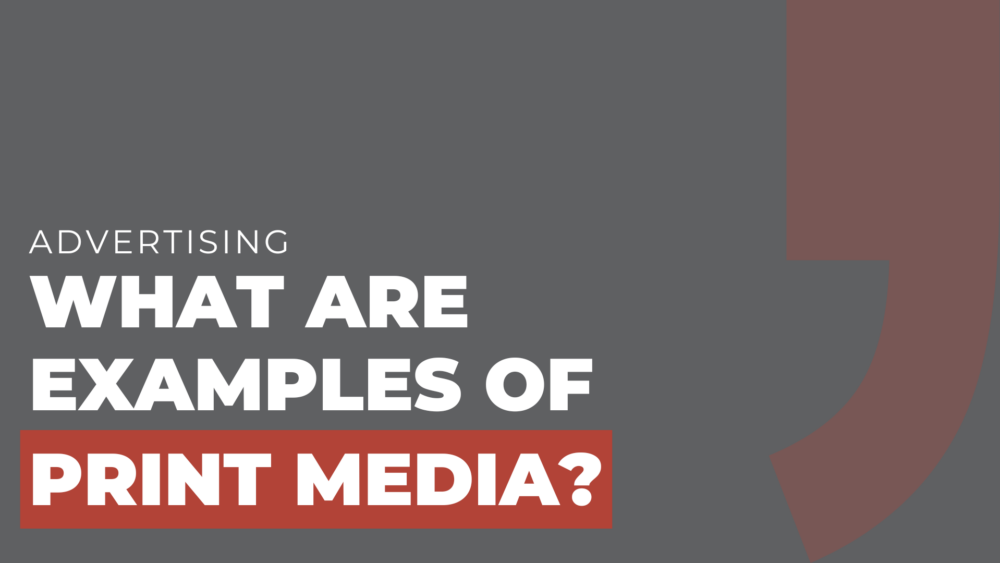Ever felt the satisfying weight of a book in your hands, the crisp rustle of a new magazine page?
In a world of constant pings and pop-ups, holding something real is a small but powerful way to push back against the digital noise.
You might think print is a dinosaur, a relic in the digital age, but it’s a persistent force, a silent player in the symphony of our lives.
So, what exactly makes up this enduring medium?
What are examples of print media?
Think of it: the authoritative spread of The New York Times, the glossy allure of Vogue, the timeless narrative of Harper Lee’s To Kill a Mockingbird, the concise clarity of the Morning Brew newsletter, the vibrant call of a local event flyer, the wanderlust-inducing visuals of a travel brochure, or the bold promise of a concert poster.
These are all threads in the rich tapestry of print media.
The Essence of the Physical:
What sets print apart? It’s the sheer physicality.
Unlike the ethereal nature of online content, print exists in a tangible realm.
You can hold it, feel its texture, and experience it with your senses.
This physical presence fosters a deeper connection, a sense of ownership.
Moreover, print often encourages a linear, focused reading experience, a deliberate journey free from the constant barrage of digital distractions.
The Anatomy of Print:
Print media’s power lies in its carefully curated components:
- Visual Impact: Design is paramount. It’s the initial hook, the visual language that captures attention.
From bold color palettes and striking typography to compelling images and strategic layouts, visual design crafts an engaging and memorable experience. - The Power of Words: Text is the heart of print. It’s where information is conveyed, stories are told, and opinions are shared.
Whether it’s a meticulously researched article or a concise, impactful headline, the written word shapes understanding and drives engagement. - Crafting the Experience: Print production techniques elevate the medium. High-quality printing, carefully selected paper stocks, and finishing touches like embossing or spot UV create a tactile and visually stunning product.
These details contribute to the overall quality and impact, making the experience more premium.
Why Print Still Matters:
In an era defined by digital dominance, print maintains its relevance for compelling reasons:
- The Power of Touch: Tangibility fosters trust.
In a world saturated with digital noise, the physical nature of print provides a sense of authenticity and credibility.
Many still prefer the tactile experience of reading from a physical page, finding it more engaging and memorable. - Precision Targeting: Print media advertising allows for highly targeted distribution, enabling advertisers and publishers to reach specific demographics and niche audiences with precision.
This strategic approach maximizes impact and minimizes wasted reach. - The Sanctuary of Focus: Print offers a refuge from the relentless distractions of the digital world.
No pop-up ads, no endless notifications, just a focused and immersive reading experience.
This uninterrupted engagement allows for deeper comprehension and a more meaningful connection with the content. - Bridging the Digital Divide: Print remains a vital source of information for those who lack access to digital devices or reliable internet connections.
It ensures that information reaches a broader audience, fostering inclusivity and accessibility.
At the End of the Day
Print media isn’t fading; it’s adapting. It’s a testament to the enduring power of tangible communication.
From the daily news to the cherished novel, print continues to inform, entertain, and inspire.
It’s a reminder that in a world of fleeting digital interactions, the physical connection to information remains profoundly impactful.
The next time you encounter a well-designed magazine, a meticulously crafted book, or even a simple flyer, recognize the enduring legacy of print. It’s not just ink on paper; it’s a powerful and persistent force that continues to shape our understanding of the world.
And in a world that is overly digital, that real world connection is what will keep print media alive.
Make an Impact with Print!
Bring Your Brand to Life with Print Media! From brochures to magazines, print still makes an impact.
Let’s create something memorable—contact us today!
- Phone: (470) 225-6814
- Website: https://mocktheagency.com
- E-Mail: hello@mocktheagency.com
- Address: 247 14th St NW, Atlanta, GA 30318


Comments are closed.